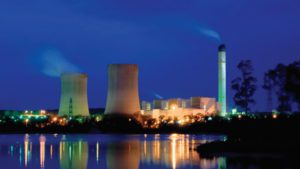Alinta Energy says it has had a huge response to its call for wind and solar projects, receiving proposals and details for around 100 wind and solar projects, including some with battery and pumped hydro storage.
There were also a few biomass proposals in response to the expressions of interest document that Alinta issued in late July, when it announced it would be seeking contracts for around 1,000MW of wind and solar.
According to a spokesman the company has so far whittled down the list to around 60, and is working through those projects and talking to their representatives.
Alinta is one of the big four games in town for the renewables industry at the moment – along with tenders put out by Snowy Hydro, AGL and the long-awaited move by the Queensland government to put its Renew400 auction into action.
All tenders are shrouded by “confidentiality”, as is traditional in nearly all aspects of Australia’s largely opaque electricity markets, but all are expected to deliver some stunning new numbers when it comes to the cost of renewables, and possibly the cost of storage.
Snowy Hydro is looking for 800MW of solar and solar capacity and its CEO Paul Broad told the Senate in late May that it was seeing projects that could deliver wind and solar in the $40-$50s/MWh, and even with storage, or firming capacity, could still come in lower than $80/MWh.
That might be surprising news to Snowy Hydro’s shareholder, the federal government, whose energy minister Angus Taylor has been railing against the cost impact of renewables and wants to call his own tender for “fair dinkum” power, which he presumes means new coal-fired generation.
That may only occur if the contract states the power source has to be dug up from the ground. It is more likely that the best Taylor can do is offer subsidies for the upkeep and maintenance on existing coal plants, and to Talk Very Loudly about the need for prices to go down.
AGL is also holding a tender, largely in relation to its planned closure of the Liddell coal generator, but also to test the field for other wind, solar and storage projects that could lower its cost of generation – an important development given that AGL is the biggest generator in the country and the most exposed to the anticipate fall in wholesale prices.
The big gentailers are known to be brutal with the pricing expectations for such projects, and will no doubt be expecting supplies below $50/MWh. They have plenty to choose from, with some 50GW of undeveloped wind and solar capacity. The question is whether the project developers can actually deliver at those costs.
For that reason, many of those bidding into those auctions are projects that are already complete, who are looking to lock in a price for at least part of their output to offset the variability of spot market prices, and to lower the cost of finance.
Most developers of new projects are looking to the corporate market, which is now starting to bloom in Australia as major manufacturers and other big energy users look to direct contracts with wind and solar farms, or with new specialist retailers, and which is likely to see a major defection of commercial and industrial load away from the big gen-tailers.
A spokesman for Snowy Hydro said that company’s tender – which had been expected to be finalised in August – was not yet complete and the conclusions had yet to be presented to the board.
That would be soon, he said. The Alinta spokesman also said his company does not have an end-date at the moment.
Alinta has made some moves into renewables, but it is mostly known for its manouvres in coal power. In 2016, it closed the Northern brown coal generator in South Australia, but it recently bought the Loy Yang B brown coal generator in Victoria and also put in a $250 million bid for the Liddell coal generator that AGL plans to close in NSW.
Alinta is seeking to challenge the dominance of the big four “gen-tailers” in the National Energy Market, and says it is growing its customer base by around 2,000 customers a day, and now has more than one million customers.
The talk is that Queensland, with its excellent solar resources, could set a new benchmark for solar costs when the government finally presses go on its long awaited auction.
It called for expressions of interest late last year, and in June reportedly sent emails to aspiring project developers apologising for the delay.
“We acknowledge that it has been some time since the closing of the expression of interest and appreciate you might be investigating alternative commercial arrangements for your project(s),” said an email quoted by the infrastructure news website InframationGroup.
“We fully support you seeking opportunities available within the existing market framework.”
A Queensland government spokesperson declined to comment on the proposed timetable for the auction.










